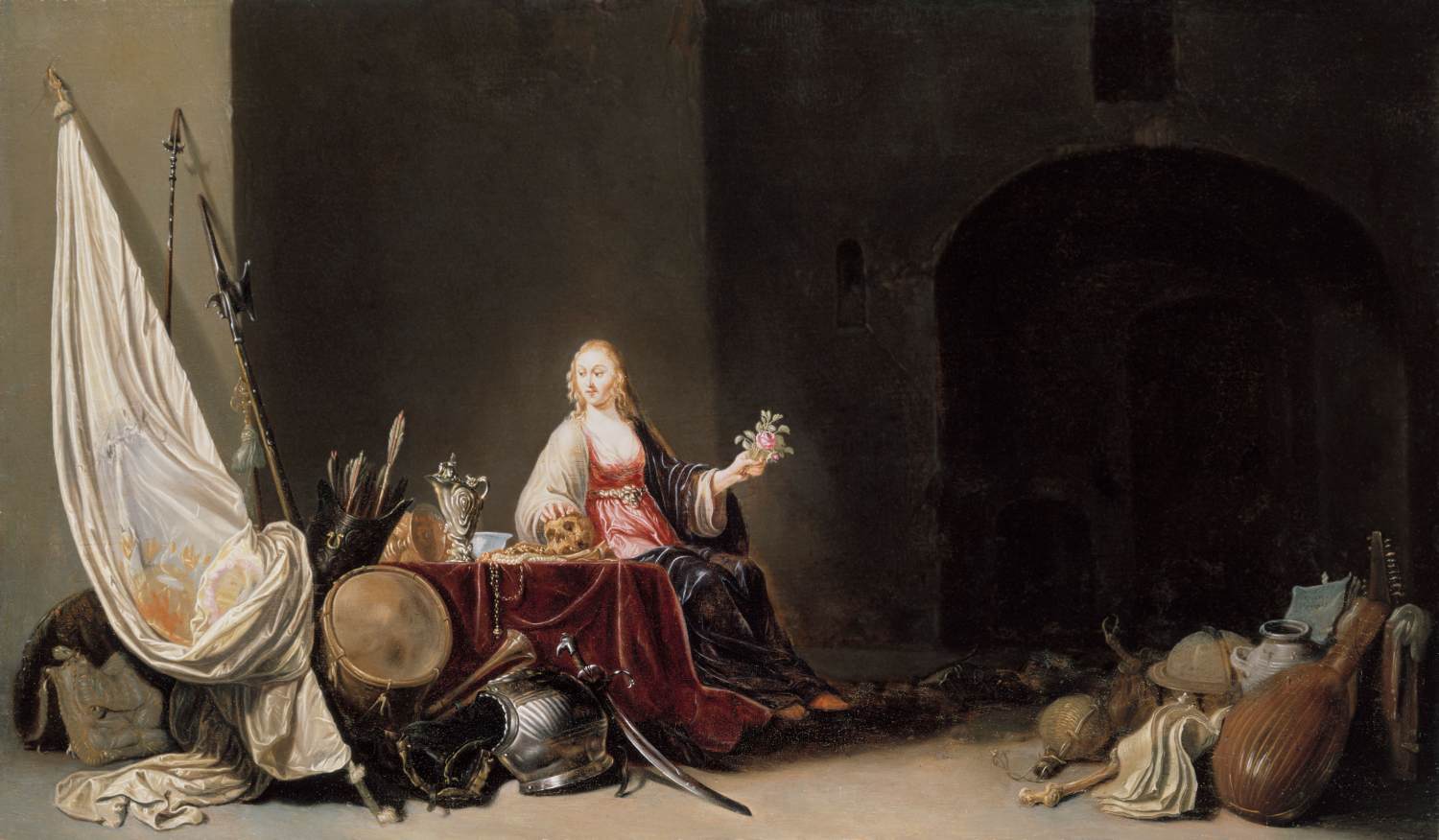Description
The painting "Vrouwe Wereld": Allegory of Transience by the artist Sybrand Van Beest is a fascinating work of art that has captivated painting lovers for centuries. This 17th century masterpiece is an allegorical representation of the transience of human life and the inevitability of death.
The artistic style of the painting is typical of the Dutch Baroque, with a focus on precision and realism in the representation of objects. The composition of the work is impressive, with a woman seated on a throne surrounded by mundane objects, such as an hourglass, a garland of withered flowers, and a skull.
Color is another interesting aspect of painting. Dark and earthy tones are used to create a gloomy and melancholic atmosphere, reflecting the theme of the work. The contrast between the withered and fresh flowers adds a touch of drama to the painting.
The history of the painting is also fascinating. It is believed to have been commissioned by a wealthy Dutch merchant as a reflection on the transience of life and the importance of virtue. The work has been the subject of numerous interpretations and has been considered as a warning about the vanity and futility of life.
Also, there are little-known aspects of the painting that make it even more interesting. Van Beest is said to have used his own wife as the model for the woman seated on the throne, adding a personal touch to the work. It has also been speculated that the painting was influenced by Stoic philosophy, which emphasizes the importance of living a virtuous life and accepting the inevitability of death.
In short, the painting "Vrouwe Wereld": Allegory of Transience by the artist Sybrand Van Beest is a Dutch Baroque masterpiece that has fascinated painting lovers for centuries. The precision in the representation of the objects, the impressive composition, the melancholic color and the thoughtful subject matter make this work a unique and valuable piece in the history of art.

